Plenty of Temples and Stupas to Choose From
Our housesitting assignment in Kathmandu was for 5 weeks. There was plenty of time to look around this great city. This included some great Temples and Stupas in the city. We were based in the town of Budhanilkantha.
There was plenty to see every time we stepped outside our gate and one such attraction was at the top of our list of Temples and Stupas to visit.
Budhanilkantha Temple
The main attraction in the town is the Budhanilkantha Temple which literally means ‘Old Blue Throat’.
It is a Hindu open-air temple dedicated to Lord Vishnu which is a large reclining statue. Lord Vishnu is the largest stone carving in Nepal.
Vishnu
The statue is about a thousand years old and is 5 metres long and lying in a large pond as if floating with his legs crossed. Hindu can walk down the steps and touch his feet but foreigners cannot enter the sacred area.
Every evening at around 7.15 pm numerous bells are rung incessantly and the local monks and villages gather to put Vishnu to bed. This ceremony lasts around 15 minutes and is repeated every morning at approximately 8.30 am to wake him back up.
This temple was only a very short stroll from our house sit. Every day we wandered past as there were often different ceremonies being performed. Saturday’s are always busy as that is the only day off for workers in Nepal.
What made it even more special was that it was how Nepalese people live day to day. No fake rituals because it looks good for tourists. It was life in the raw and that is hard to find when you visit foreign countries.
There was always a friendly ‘Namaste’ and we felt welcomed as we watch them celebrate with Vishnu.
Although this is a Hindu Temple, we regularly saw monks performing Buddhists ceremonies within the grounds and the two religions celebrate side-by-side.
Boudhanath Stupa
The next on our list of Temples and Stupas to visit was the Boudhanath Stupa (Boudha). This is one of the holiest and most recognisable sites in Kathmandu. It is 120m in diameter which makes it the largest temple in Nepal.
We paid 400NPR/$5.40NZ each to get in. We turned down constant offers of guiding services, preferring to explore the stupa under our own steam.
It is an imposing stupa, sitting on an octagonal base. Surrounded by prayer wheels and has colourful prayer flags draped from its 36-metre central spire. The giant eyes on all four sides of the stupa are known as Buddha eyes and wisdom eyes. The eyes of the Buddha in the stupa symbolize the all-seeing ability of the Buddha.
Because the eyes were always on us, we made sure we wandered around the stupa in a clockwise direction, enjoying the serene surroundings – considering there was a chaotic road not 100 metres away. With no vehicles permitted on site, it made it easier to walk around.
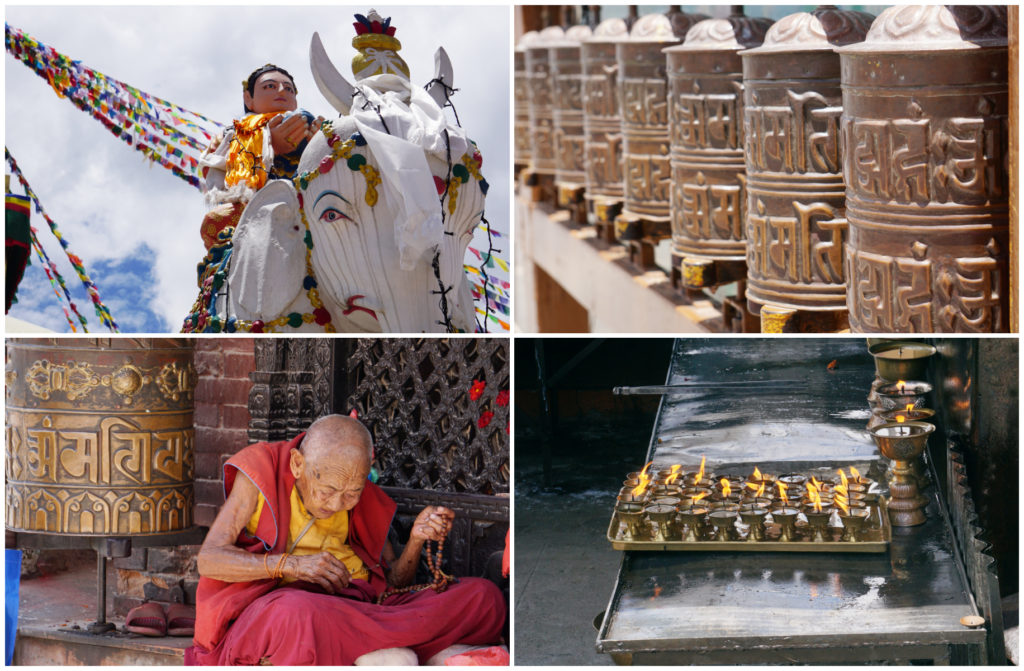
Lavish ornaments around the stupa base, the resident monk (I think the same age as the stupa!, prayer wheels and ghee (butter) candles
The stupa dates back to 600AD.
Buildings Surrounding the Stupa
The souvenir shops and cafes in the tall buildings that ring the stupa remind you that you are in a touristy area. There are small laneways within easy walking distance. It all this seems a little intrusive to the serene holy site.
We found a pleasant spot in a rooftop bar and enjoyed a cold beer and some buff and cheese momos.
The Stupa lights up after dark with hundreds of fairy lights.
Swayambhunath Stupa
The Swayambhunath (AKA Monkey Temple for obvious reasons) Temple to the west of Kathmandu city.
It lost its spire in the earthquake. The repair and restoration work in ongoing. Using 20 kg of gold, the Stupa was re-gilded in 2010.
Not as grand as some of the other Temples and Stupas we’d visited. It holds great religious significance in Kathmandu.
Like the Boudha Stupa, the spire has painted four sets of Buddha’s eyes and eyebrow, seemingly watching your every move.
Monkeys live in the surrounding trees and make their presence known at the top of the spire as well. They seemed well used to people and didn’t appear to cause too many problems. They enjoyed eating the offerings put out for worship around the Stupa.
We approached the mountain on the eastern side to walk the 365 worn steps to the top. Built in the 17-century pilgrims relinquished their sins on the way up. One step for every day of the year.
It was worth the climb up the mountain. The panoramic views of Kathmandu were amazing.
Click on the link below to see our highlights of our trips around the Temples and Stupas of Kathmandu.
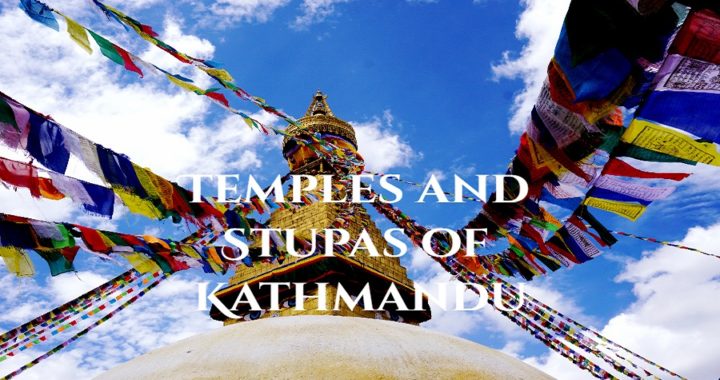
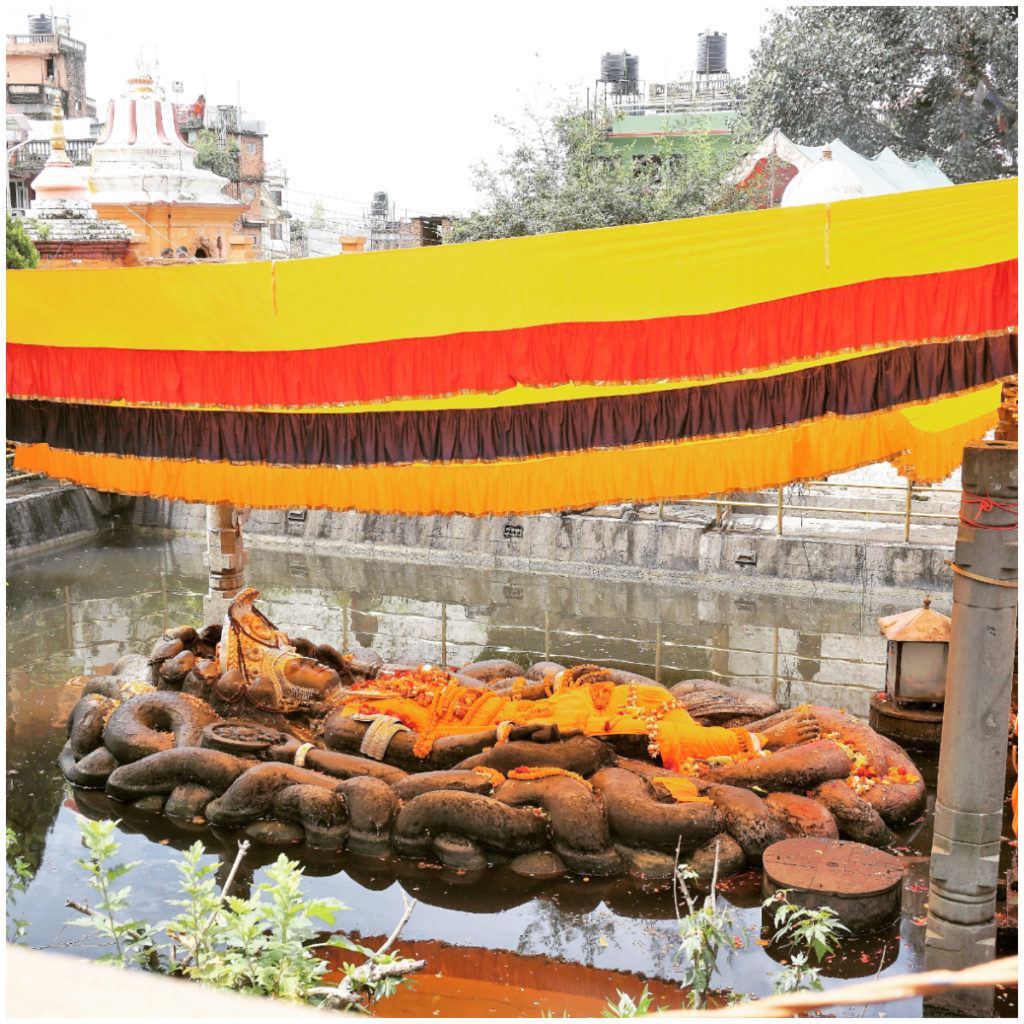
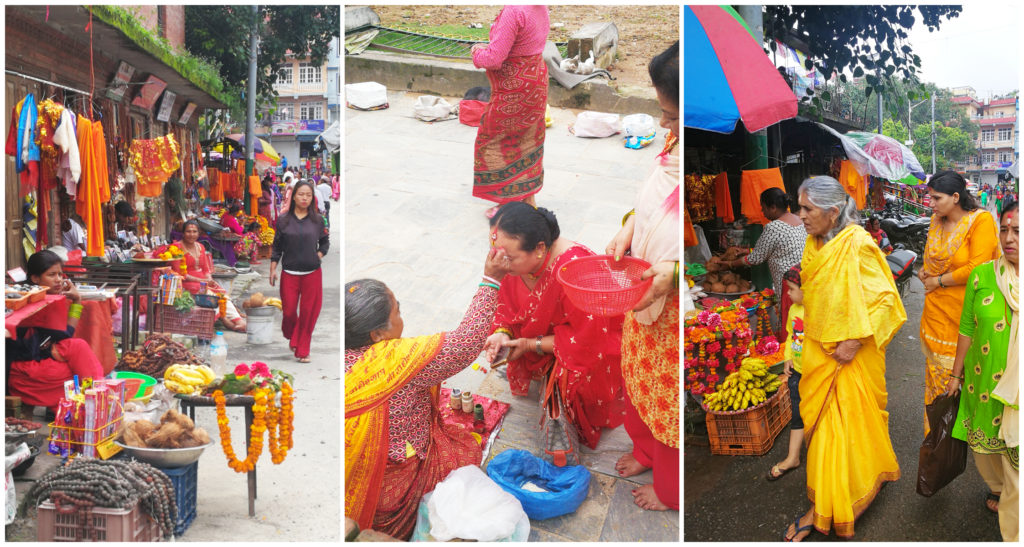
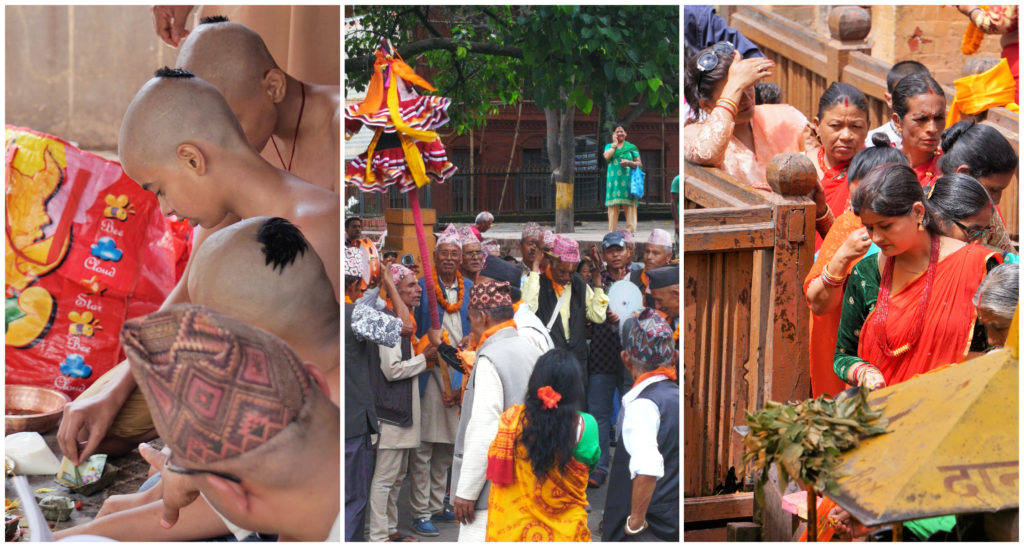
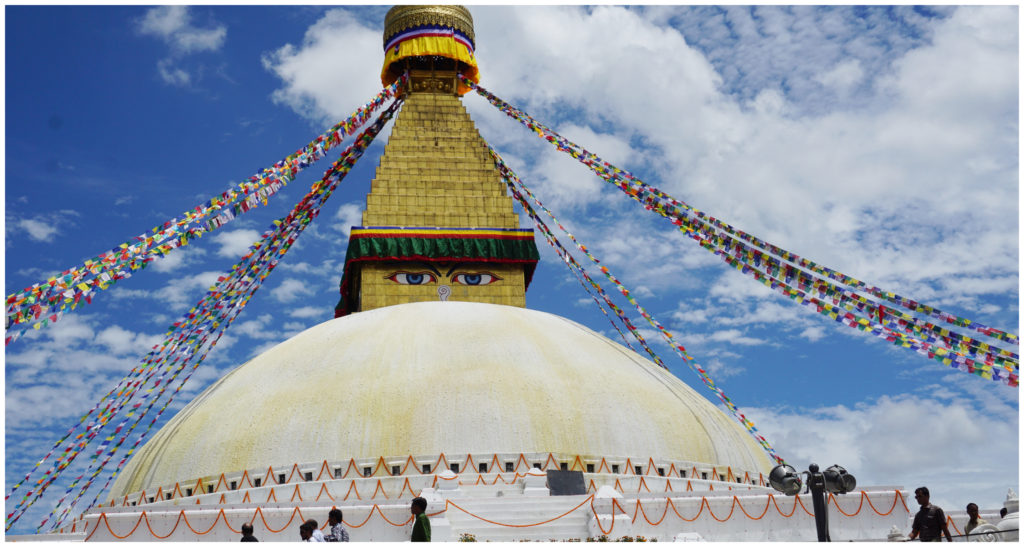
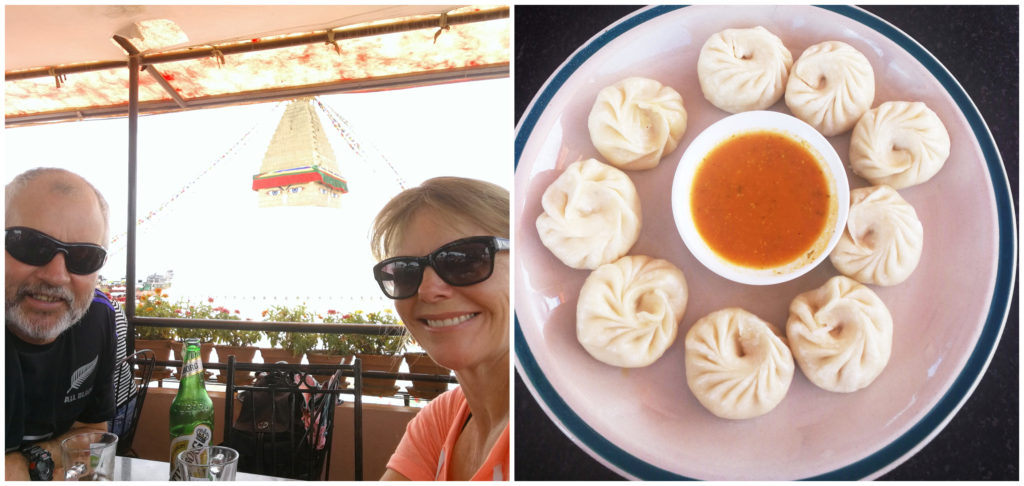
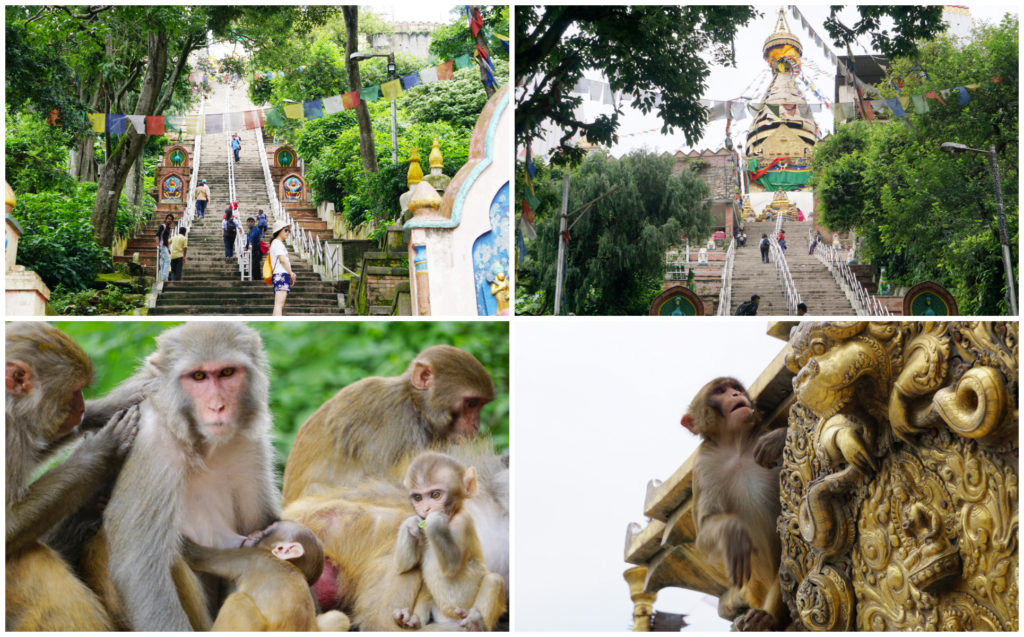
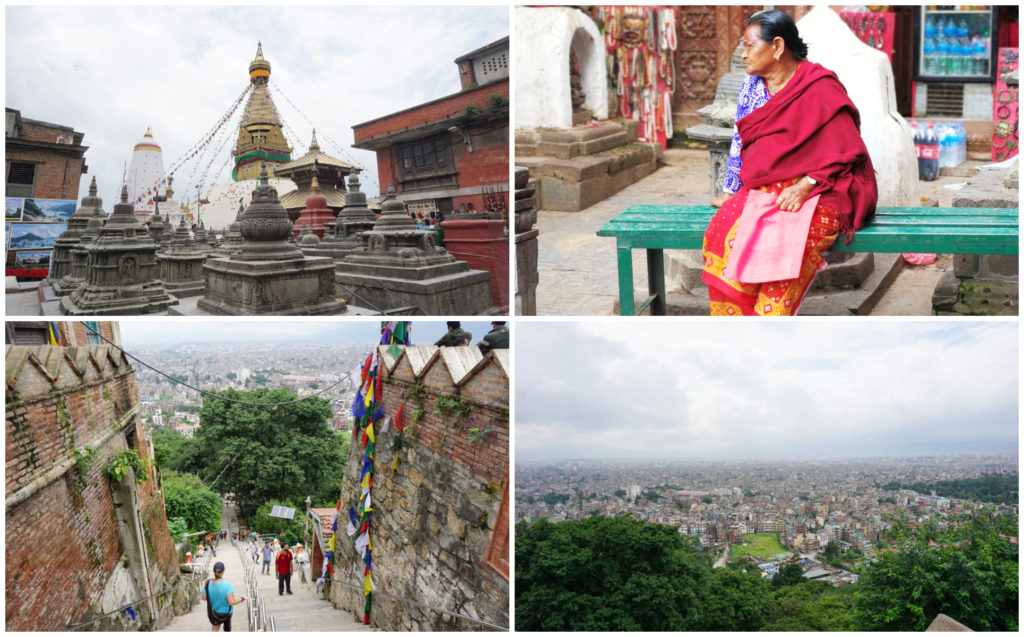
Hi. I have enjoyed following your Nepal time. I have a trekking and cycling company and go to Nepal twice a year taking groups trekking and Cycling.. It is really good to see Kathmandu through someone elses eyes.
I spend approx 4 mths a year there and have been going since 1996. I love Nepalese, mountains and culture. Go well and enjoy the rest of your stay. I have a Campervan here in NZ and spend time on road here at times.
Hi Ann, that sounds amazing! We would love to return to Nepal and visit Pokhara and Mustang (just not in the wet season!). Head Europe for our next house sitting assignment so not able to get there this time. We’re heading back to NZ to live on the road in Feb/March next year. Keep in touch as we might meet up on the road in the motherland. Message me on FB. I’ll also have a look at your website.
Really interesting post, I’ve enjoyed your Kathmandu adventures